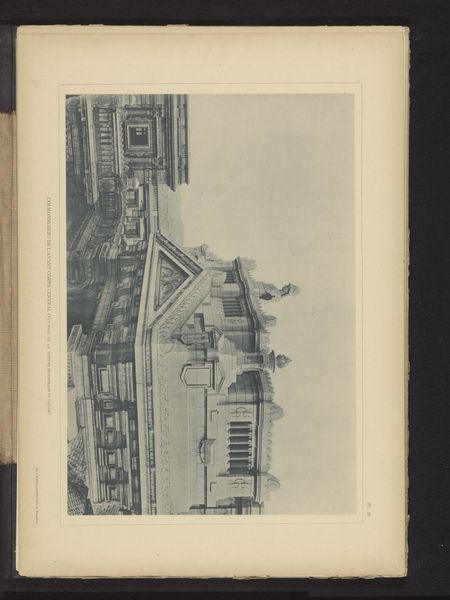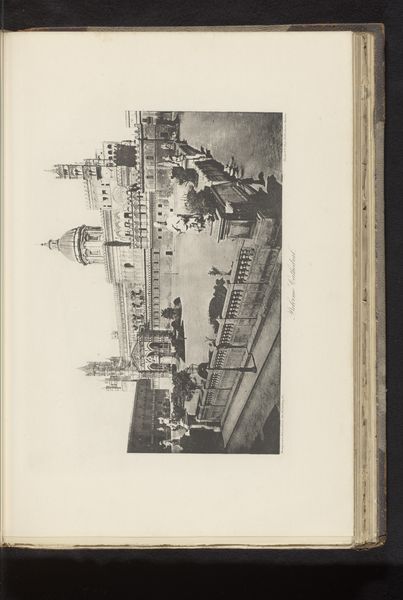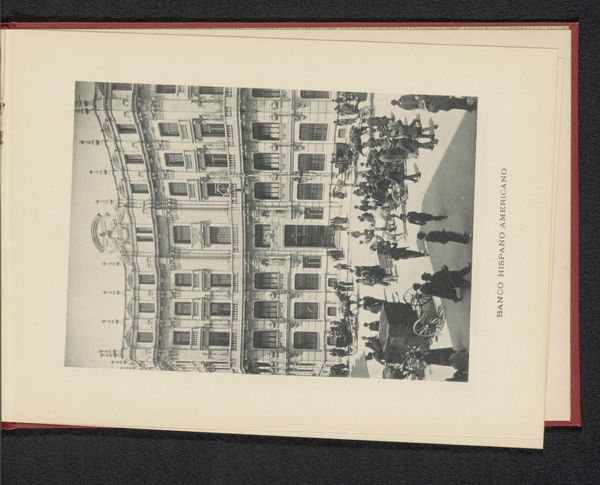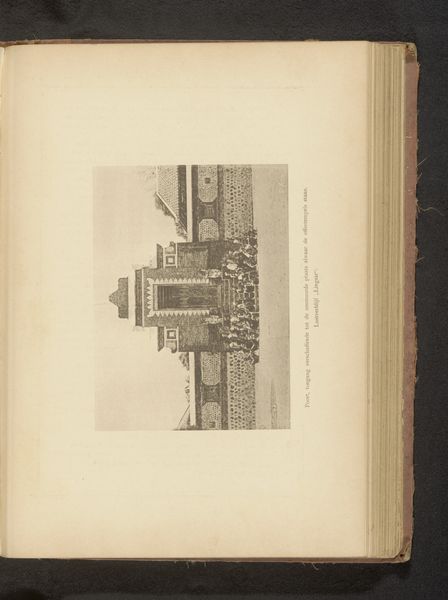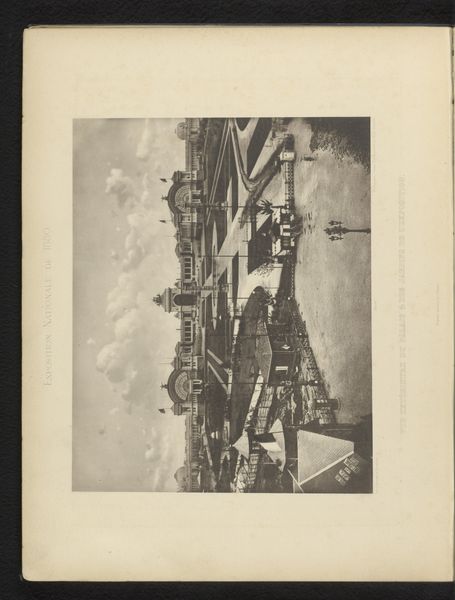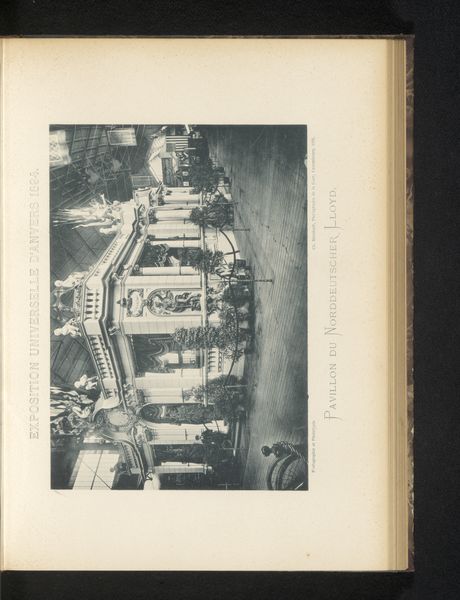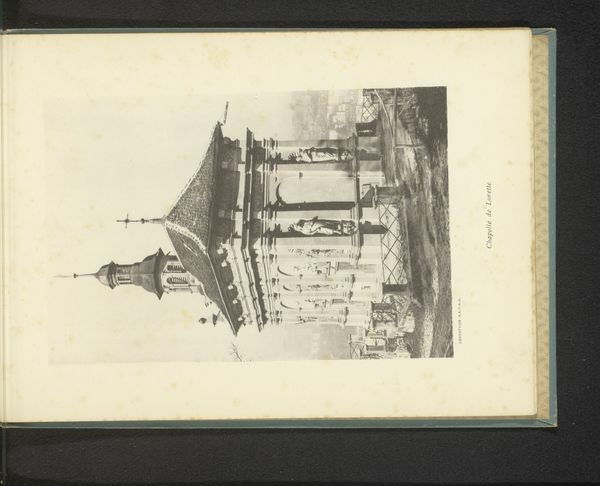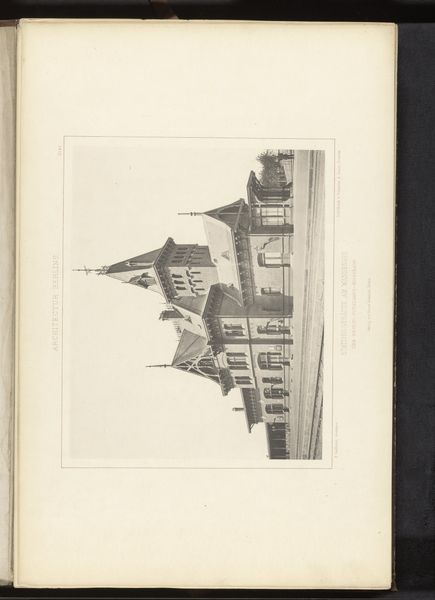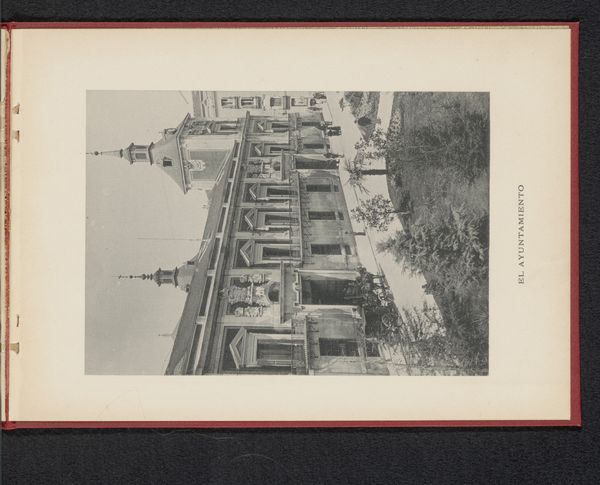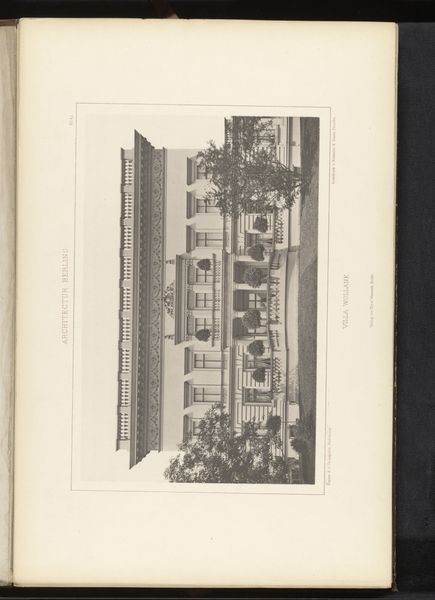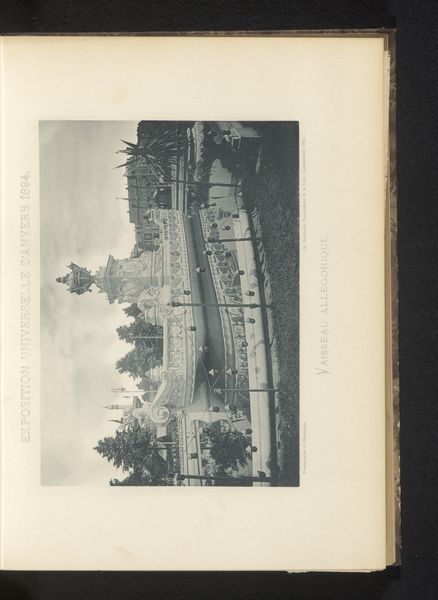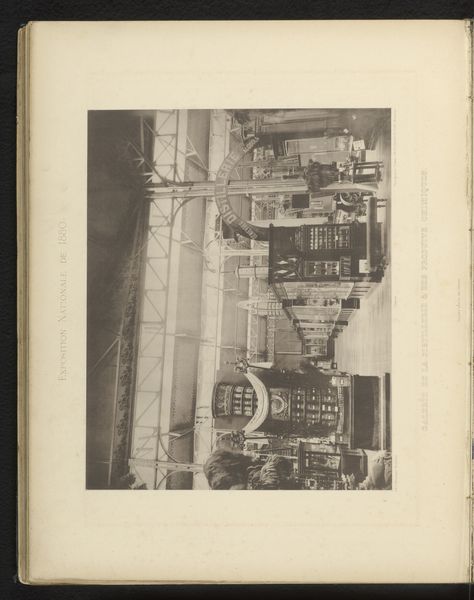
Gezicht op de Calle de Alcalá met links de Iglesia de las Calatravas in Madrid c. 1888 - 1898
0:00
0:00
photography
#
pictorialism
#
photography
#
coloured pencil
#
cityscape
#
street
Dimensions: height 163 mm, width 115 mm
Copyright: Rijks Museum: Open Domain
Editor: Here we have a photographic print by Hauser y Menet, dating back to between 1888 and 1898, depicting the Calle de Alcalá in Madrid, with the Iglesia de las Calatravas on the left. The subdued tonality lends it a rather timeless, almost dreamlike quality. What elements stand out to you in this work? Curator: The immediate observation is the receding perspective, anchored by the architectural mass of the Iglesia. The contrast between the dome and the sharp lines of the surrounding buildings is striking. Do you notice how the figures are positioned not merely as inhabitants but as structural components within the photographic frame? Editor: I do see that. The people and carriages are carefully placed to guide the eye along the street, aren’t they? But is it just a straight-forward documentary photograph? It feels… staged almost? Curator: Indeed. The careful arrangement suggests pictorialist tendencies, evident not just in the subject matter but in the tonality itself. Consider the tonal range and the depth of field; how does this choice impact your reading of the photograph's intent? The softness almost renders the industrial activity…romantic. Editor: That’s a great point; it softens what could otherwise be a very rigid composition. By focusing on composition, the subject of the photograph, while geographically specific, takes on a more universal theme: urban life, seen through an artistic lens. Curator: Precisely. We can decode meaning by appreciating how form shapes function, transcending mere representation to suggest commentary, which perhaps also serves to immortalize a particular cultural zeitgeist, yet also maintains artistic relevancy due to structural composition. Editor: This reframes my thinking about late 19th-century photography. It's not simply capturing reality; it’s an active artistic construction. Curator: Exactly. Seeing beyond the representational allows a deep dive into understanding intent and affect via structure.
Comments
No comments
Be the first to comment and join the conversation on the ultimate creative platform.
